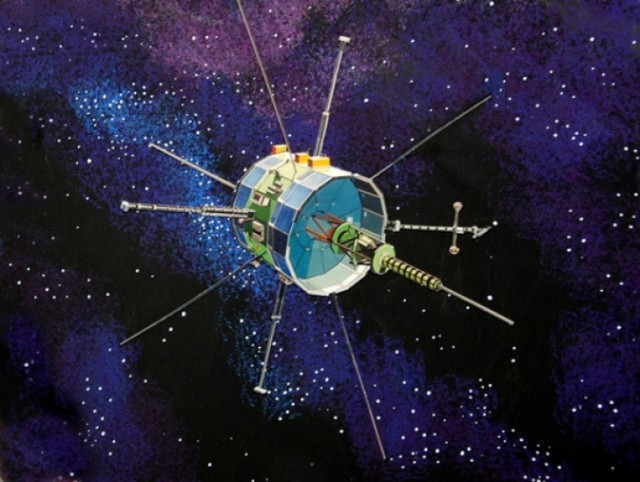ISEE-3 Spacecraft Moon Data To Be Given To The Public

ISEE-3, the 36-year-old spacecraft retired by Nasa and reactivated by a private group of scientists and engineers, will make a swing past the moon on Sunday as part of its long journey around the sun.
It will be another 15 years before ISEE-3 gets this close to Earth again.
During the lunar flyby, which will occur on August 10 at 11:16am PDT (3.16pm GMT), members of the ISEE-3 Reboot Project will begin collecting scientific data from the spacecraft's instruments and make it available to the public.
On Friday, the team announced they had partnered with Google to create a new website for the spacecraft, and that they would conduct a Google Hangout with team members and Nasa representatives at 10:30am PDT (2.30pm) before the flyby.
The team led by Dennis Wingo, chief executive of California-based Skycorp Incorporated, and Keith Cowing, editor of the websites NASAWatch and SpaceRef, had worked for months to return the spacecraft to an orbit close to the Earth's, where it could resume its original mission observing the solar environment.
The team raised nearly $160,000 (£953,000, €119,000) in a crowdfunding campaign, redeveloped the capability to communicate with the spacecraft, obtained permission from Nasa to command the spacecraft, and successfully took control.
They had hoped to return the spacecraft to Earth's orbit, where it would monitor solar wind and radiation, but they had to abandon that plan when the attempts to fire the thrusters fizzled. There wasn't enough nitrogen pressurent left to force fuel through the spacecraft's thrusters.
But, the team says it will continue to collect science data as the spacecraft continues along its sun-centric orbit.
At least four of the spacecraft's instruments are returning good data, said a team member. That includes a magnetometer that can explore where the Earth's magnetosphere meets solar winds, and an experiment that can be used to measure the flux of protons coming from the sun.
Radio dishes on the ground will be able to pick up ISEE-3's science signals for months to come. The Arecibo telescope in Puerto Rico will likely lose contact with the spacecraft in about a year.
Its solar arrays draw more than 90% of the power they did in 1980 — about 150W — and the spacecraft's 1970's CMOS circuitry is still largely functional.
© Copyright IBTimes 2025. All rights reserved.





















